The King Salmon, also known as the Chinook Salmon, is a large species in the Salmonidae family. Researchers place this species in the taxonomic genus Oncorhynchus, alongside the sockeye salmon, cutthroat trout, pink salmon, dog salmon, Coho salmon, rainbow trout, and more. Read on to learn about the King Salmon.
Description of the King Salmon
Like most members of the Salmonidae family, this fish changes its appearance drastically while spawning. In their oceanic form, this species has silver colored scales with hints of blue-green. It also has a unique black coloration around its mouth. While spawning, their scales darken and take on a reddish hue, and their mouths grow elongated and hooked.
This species is the largest in Oncorhynchus. Large individuals sometimes reach 100 lbs. in weight, and many grow to a length 5 ft. or greater.
Interesting Facts About the King Salmon
This fish has a number of interesting behaviors, traits, and adaptations. Learn more about what makes this fish unique, below.
- Anadromous – These fish hatch in freshwater habitats, but spend their adult lives at sea. When they reach sexual maturity, they migrate back to freshwater habitats to spawn.
- Kype – When they return to freshwater, these fish undergo drastic changes. Their coloration darkens, and males develop elongated, hooked mouthparts. Their elongated mouth, also known as a “kype,” also grows long canine teeth.
- Fish Farming – Throughout the past three decades, fisheries have steadily reduced the number of wild-caught Chinook salmon, and increased the number of farmed fish. While people still catch several million wild fish, fish farms have increased in popularity for their ability to sustainably produce the fish.
- What’s in a Name – This fish doesn’t get its name from its hook-like chin, but the indigenous Chinookan people. The native Chinookan, along with other tribes, relied heavily on this fish species for food.
Habitat of the King Salmon
Like most of the Salmonidae family, this species has an anadromous lifecycle. The young hatch in freshwater habitats, typically creeks or streams. As they grow, the fry move downstream into larger lakes, ponds, rivers, and estuaries. Adults spend their lives in the ocean, before returning to freshwater habitats to spawn.
Distribution of the King Salmon
This fish lives in the northern Pacific Ocean. Its range extends from California up to Alaska. From there, you can find the fish across the Bering Strait into the seas around Russia and Japan. Humans have also introduced this species outside of its native range. People raise this fish in fish farms, primarily in New Zealand.
Diet of the King Salmon
These salmon have carnivorous diets, which means that they feed on other animals. Their diet depends largely on their age, and thus, their size. As juveniles they hunt for invertebrates.
Some common prey include plankton, insect larvae, insects, small shrimp, crabs, and more. Adults hunt for larger plankton, such as krill, as well as squid, shrimp, herring, pilchard, sandlance, and other fish.
King Salmon and Human Interaction
Humans interact with this species quite frequently. Because they reach such impressive sizes, this species faces targeting by fishermen. Human activity, such as pollution, habitat destruction, and dam building, also impacts these fish. Populations in some regions face greater threat than others. The IUCN has not assessed the population as a whole.
Domestication
Humans have not domesticated this fish in any way.
Does the King Salmon Make a Good Pet
No, you would not want to keep this fish as a pet. It grows quite large, and would be difficult for you to keep in a home aquarium.
King Salmon Care
People keep this species in fish farms quite frequently. They raise the fish for commercial processing as food. Young fry live in smaller tanks, which graduate into larger sizes as they grow.
Fish farms house the adults in large sea cages. They feed the species a variety of different fish. When the fish reach sexual maturity, the fish farmers manually remove the eggs and sperm to artificially produce young.
Behavior of the King Salmon
These fish undergo great migrations throughout their lives. Young fry spend their first year or two in freshwater creeks, rivers, streams, or lakes. As they grow, they move downstream and enter the ocean. Adults live their lives in the ocean, and return to freshwater when they reach sexual maturity to spawn.
Reproduction of the King Salmon
While spawning, reproduction occurs outside of the body. The females dig shallow nests, known as “redds,” in the gravel. When the female deposits her eggs, the male releases his sperm, or “milt,” to fertilize them. She then buries the eggs, and they repeat this process several times. Both die shortly after spawning.
Females produce several thousand eggs during spawning. It takes several months for the eggs to hatch, depending on the water temperature. The young are fully independent at hatching.


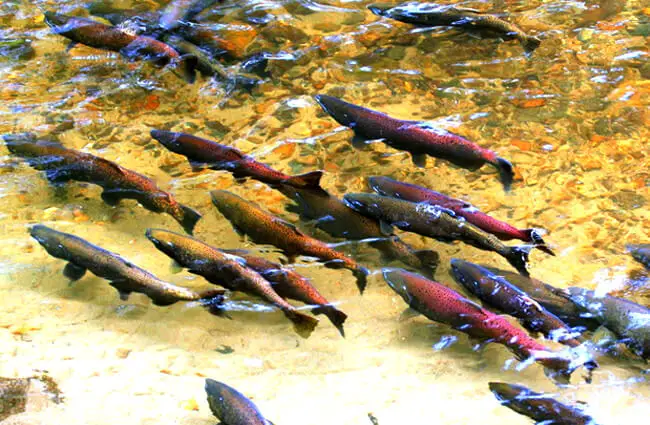
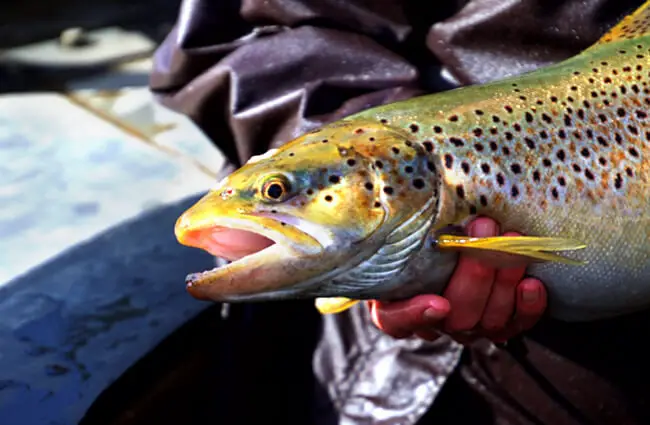
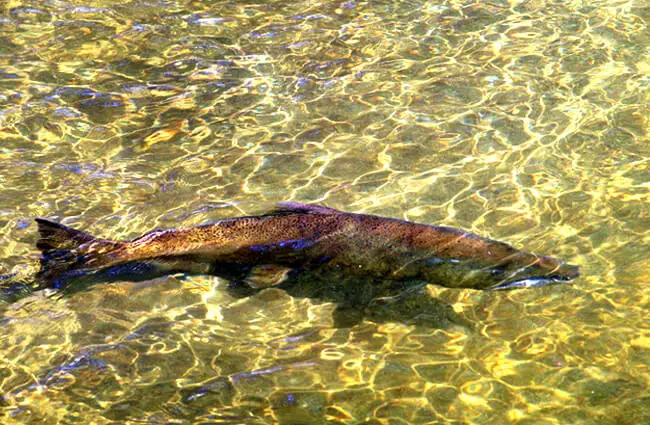
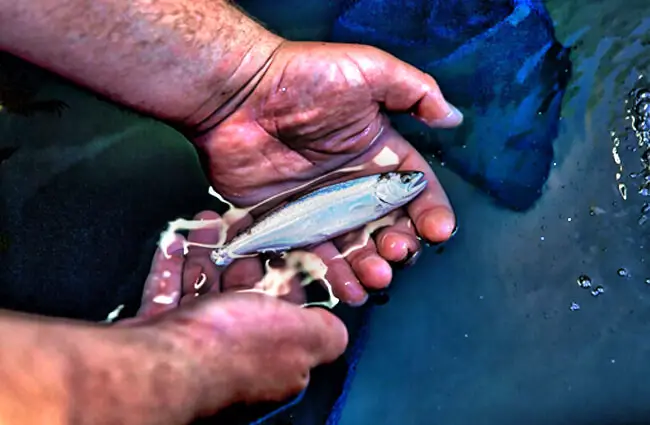
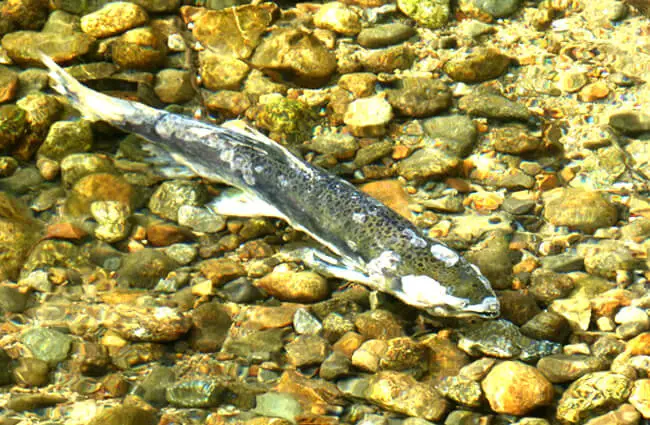
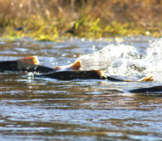
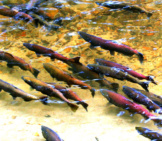
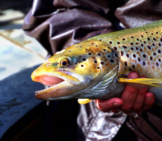
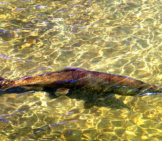

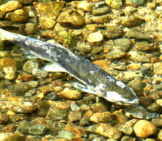
![Red Angus Closeup of a beautiful Red Angus cowPhoto by: U.S. Department of Agriculture [pubic domain]https://creativecommons.org/licenses/by/2.0/](https://animals.net/wp-content/uploads/2020/03/Red-Angus-4-238x178.jpg)


![Red Angus Closeup of a beautiful Red Angus cowPhoto by: U.S. Department of Agriculture [pubic domain]https://creativecommons.org/licenses/by/2.0/](https://animals.net/wp-content/uploads/2020/03/Red-Angus-4-100x75.jpg)

